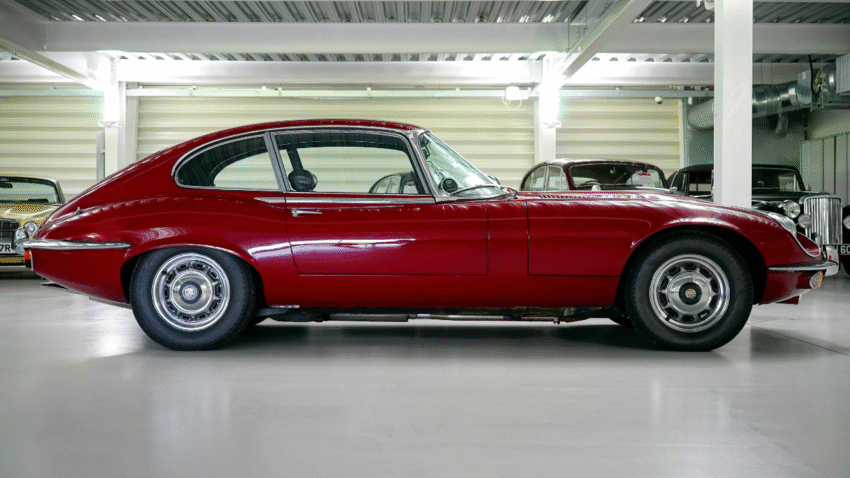Introduction
If you’ve got a garage workbench, you know it’s a magnet for splashes of paint, oil, dust, and random debris from projects. Over time, the wall behind your bench can get stained and worn. Adding a backsplash not only protects the wall but also makes cleaning easier and adds a touch of style to your workspace. In this guide, you’ll learn how to add a backsplash behind a garage workbench that’s both durable and great-looking.
Why Adding a Backsplash Matters for Your Garage
Installing a backsplash behind your workbench offers both practical and aesthetic benefits:
- Protects the wall from paint splatters, oil stains, and tool marks.
- Makes cleaning easier by providing a smooth, wipeable surface.
- Improves garage aesthetics with a polished, organized look.
- Increases durability in a high-use area.
- Can double as a tool organization wall if using materials like pegboard or slatwall.
A backsplash turns your workbench wall from a damage-prone area into a hardworking, protective surface.
Step-by-Step Guide to Adding a Backsplash
1. Choose the Right Material
Your backsplash material should match your garage’s function and style:
- Metal sheets (stainless steel or aluminum): Highly durable, easy to clean, industrial look.
- Pegboard: Doubles as tool storage, budget-friendly, easy to install.
- Tile (ceramic, porcelain, or peel-and-stick): Stylish, water-resistant, easy to wipe down.
- PVC or plastic panels: Affordable, moisture-resistant, lightweight.
- Painted plywood or MDF with sealant: Customizable, low-cost option.
2. Gather Materials and Tools
Materials:
- Chosen backsplash material
- Screws or adhesive (depending on material)
- Caulk or sealant (optional)
- Edge trim (for a finished look)
Tools:
- Tape measure
- Level
- Pencil
- Drill or screwdriver
- Saw (if cutting material to size)
- Safety glasses and gloves
3. Measure Your Space
Measure the width and height of the wall area behind your workbench where the backsplash will go. Mark these dimensions on your backsplash material before cutting. If your bench is fixed to the wall, measure from the top of the bench to your desired backsplash height—typically 18–24 inches for effective coverage.
4. Prepare the Wall
- Clean the wall to remove dust, grease, or debris.
- Fill any holes or cracks so the backsplash will sit flush.
- If using adhesive, lightly sand glossy paint so it sticks better.
5. Cut the Material to Size
Using your measurements, cut the backsplash material with the appropriate tool:
- Metal: Use tin snips or a metal-cutting blade.
- Wood or PVC panels: Use a circular saw or jigsaw.
- Tile: Use a tile cutter or wet saw.
Always wear safety glasses when cutting.
6. Position and Mark for Installation
Hold the backsplash material against the wall in its final position. Use a level to ensure it’s straight. Mark where screws, anchors, or adhesive strips will go.
7. Install the Backsplash
For Screw Installation:
- Drill pilot holes into the backsplash and wall studs.
- Secure the backsplash with screws, starting from the center and working outward to avoid warping.
For Adhesive Installation:
- Apply construction adhesive to the back of the material in a zigzag pattern.
- Press the backsplash firmly against the wall.
- Use temporary bracing or painter’s tape to hold it in place until the adhesive cures.
8. Finish the Edges
For a professional look, add edge trim where the backsplash meets the wall, counter, or ceiling. You can use aluminum trim, wood molding, or PVC edging depending on your material.
9. Seal the Backsplash (If Needed)
If you used tile, apply grout and then seal it to prevent moisture from penetrating. For wood or MDF, apply a clear polyurethane sealant for extra durability and easier cleaning.
10. Organize and Accessorize
Once installed, you can add extra functionality:
- Attach hooks or magnetic strips for tools.
- Add LED task lighting above the backsplash.
- Mount small shelves for parts bins or supplies.
Common Mistakes to Avoid
- Skipping Wall Prep
- Problem: Adhesive may not stick, or material may sit unevenly.
- Solution: Always clean and repair the wall before installation.
- Using the Wrong Material for the Environment
- Problem: Wood can warp in damp garages without proper sealing.
- Solution: Choose moisture-resistant materials for longevity.
- Not Securing Properly
- Problem: Panels may shift or warp over time.
- Solution: Use enough screws or adhesive for a solid hold.
- Poor Measuring
- Problem: Gaps or uneven edges ruin the look.
- Solution: Measure twice, cut once, and check with a level.
- Neglecting the Edges
- Problem: Rough edges collect dirt and moisture.
- Solution: Finish with trim or sealant for a clean look.
Extra Garage Tips & Hacks
- Pegboard Backsplash: Perfect for tool-heavy garages; lets you hang tools directly behind your work area.
- Magnetic Tool Holders: If you use a metal backsplash, magnetic strips make storing small tools effortless.
- Bright Colors: Painting or choosing a bright backsplash color can improve visibility in your work zone.
- Related Tip: See our guide on how to set up a wall-mounted tool organizer for even more efficient tool storage ideas.
Conclusion
Learning how to add a backsplash behind a garage workbench is a simple upgrade that delivers big benefits. It protects your walls, improves functionality, and adds style to your workspace. With the right material, tools, and installation method, you can complete this project in just a few hours and enjoy a cleaner, more organized garage.
Bookmark this guide to keep your garage work area protected, efficient, and looking great year-round.
